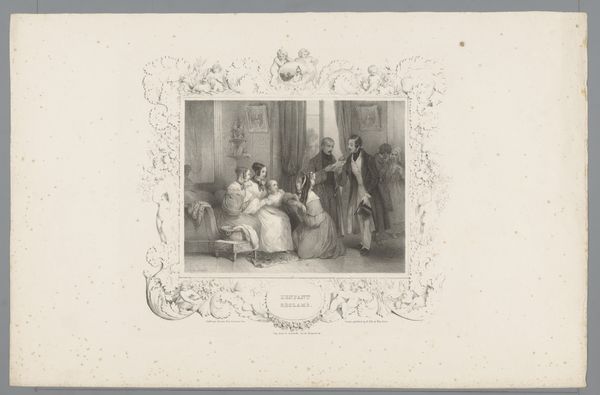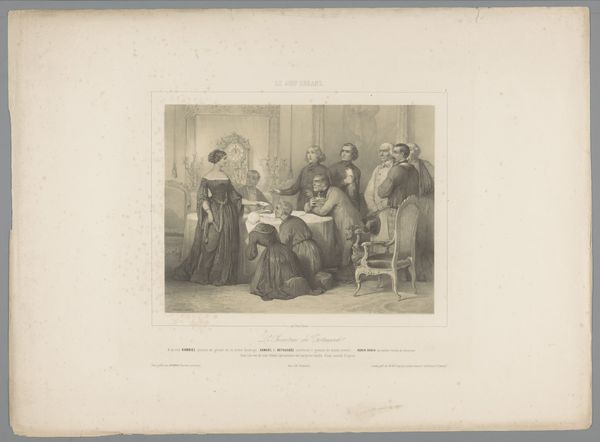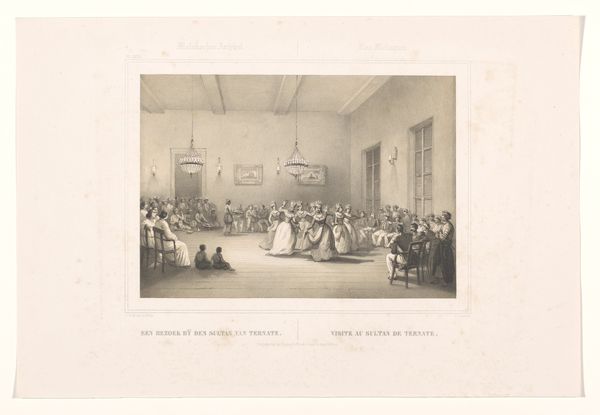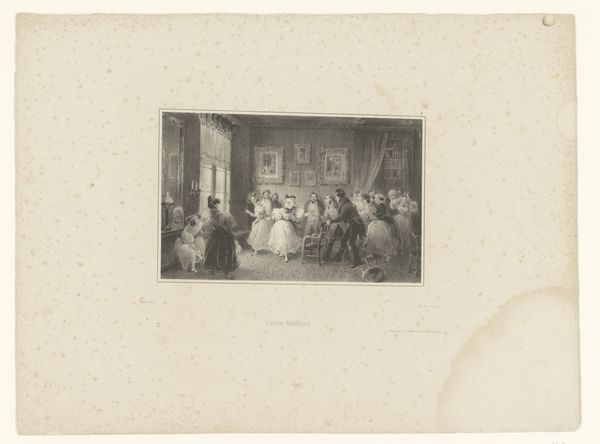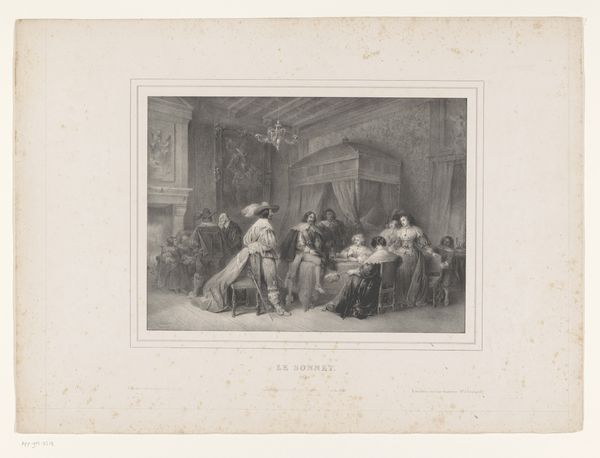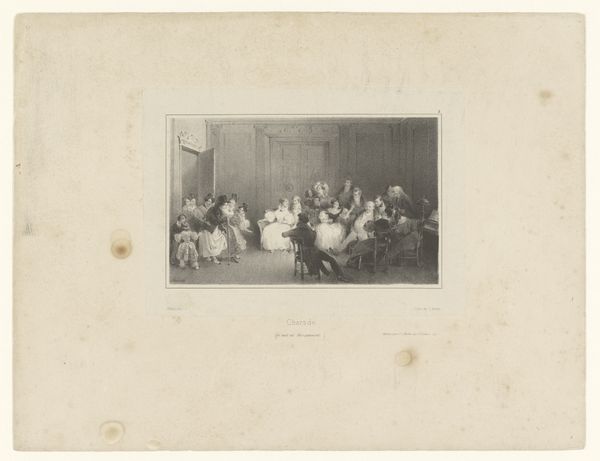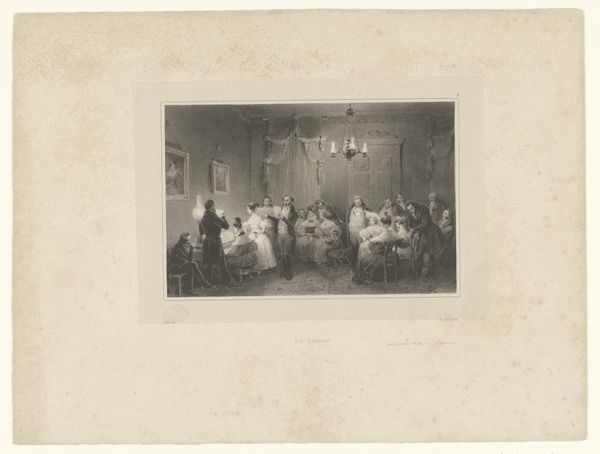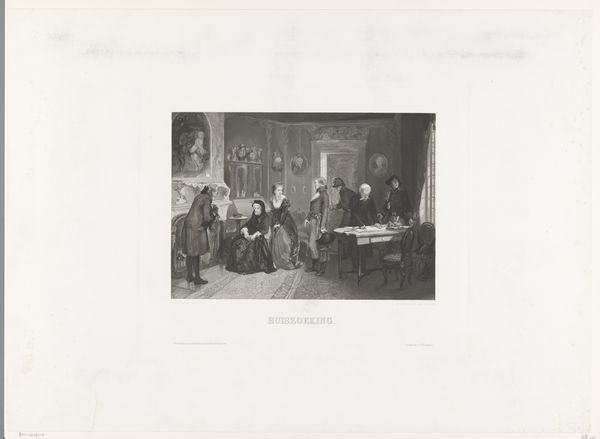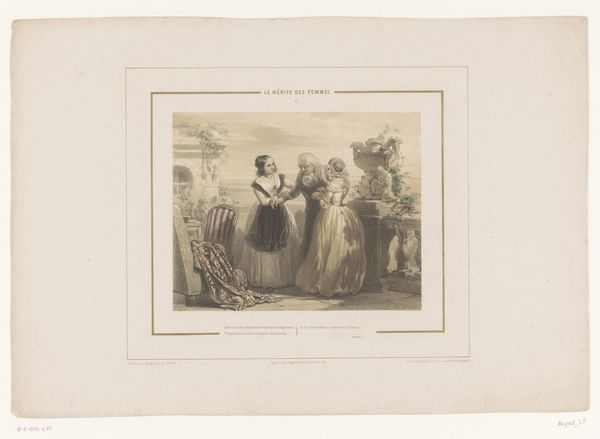
Gezelschap bekijkt aquarellen in een rijkelijk gedecoreerd interieur 1836 - 1837
0:00
0:00
jeanbaptistemadou
Rijksmuseum
drawing, lithograph, print
#
portrait
#
drawing
#
lithograph
# print
#
group-portraits
#
romanticism
#
genre-painting
#
history-painting
#
monochrome
Dimensions: height 416 mm, width 573 mm
Copyright: Rijks Museum: Open Domain
Curator: "Gezelschap bekijkt aquarellen in een rijkelijk gedecoreerd interieur," or "Company viewing watercolours in a richly decorated interior", a print from 1836-1837 by Jean-Baptiste Madou, here at the Rijksmuseum. Editor: What a scene of studied leisure. The textures, from the ornate wallpaper to the sheen of the women’s dresses, speak to a society defined by its possessions and meticulous presentation. Curator: Indeed. And look closely at the lithographic process here, the way Madou builds tone and detail. These prints made images accessible; a middle class could simulate the experience of owning art. Think of it – printed impressions democratizing access! Editor: I see those dresses and they tell a deeper story than just material wealth. The styles, the very cut, the postures—they reflect a performance of social rituals. What hidden messages or accepted norms do these silhouettes project? What’s with the little girl pointing so attentively, and is that a monk sitting by the table? Curator: Excellent point. Religious imagery appearing alongside children symbolises, here, piety and purity, so relevant for that time in society. That little girl is being initiated, instructed, subtly indoctrinated to adhere to this environment’s unspoken codes, which is made palpable in the print's detail, revealing the paper, inks and the pressing that allows the picture to become affordable and widespread. Editor: Affordability aside, there's still a powerful sense of looking IN on a carefully constructed symbolic realm. This carefully lit room—it almost feels stage-like. Notice the large painting just barely visible above the figures in the center of the scene? What power dynamics are reflected, quite literally in its obscured image of presumably wealthy members of that same group? Curator: Exactly! Materially speaking, these prints were crafted to feed a specific market. But its the underlying currents—class aspirations, social anxieties – are so telling when studying artistic production in 19th century society. Editor: Ultimately, "Gezelschap bekijkt aquarellen" uses its visual vocabulary to echo through time; reflecting our desires for beauty, social acceptance, even when printed with black ink on white paper. Curator: Well said, highlighting that the making of art and it's place within the socio-historical narrative of that era.
Comments
No comments
Be the first to comment and join the conversation on the ultimate creative platform.
